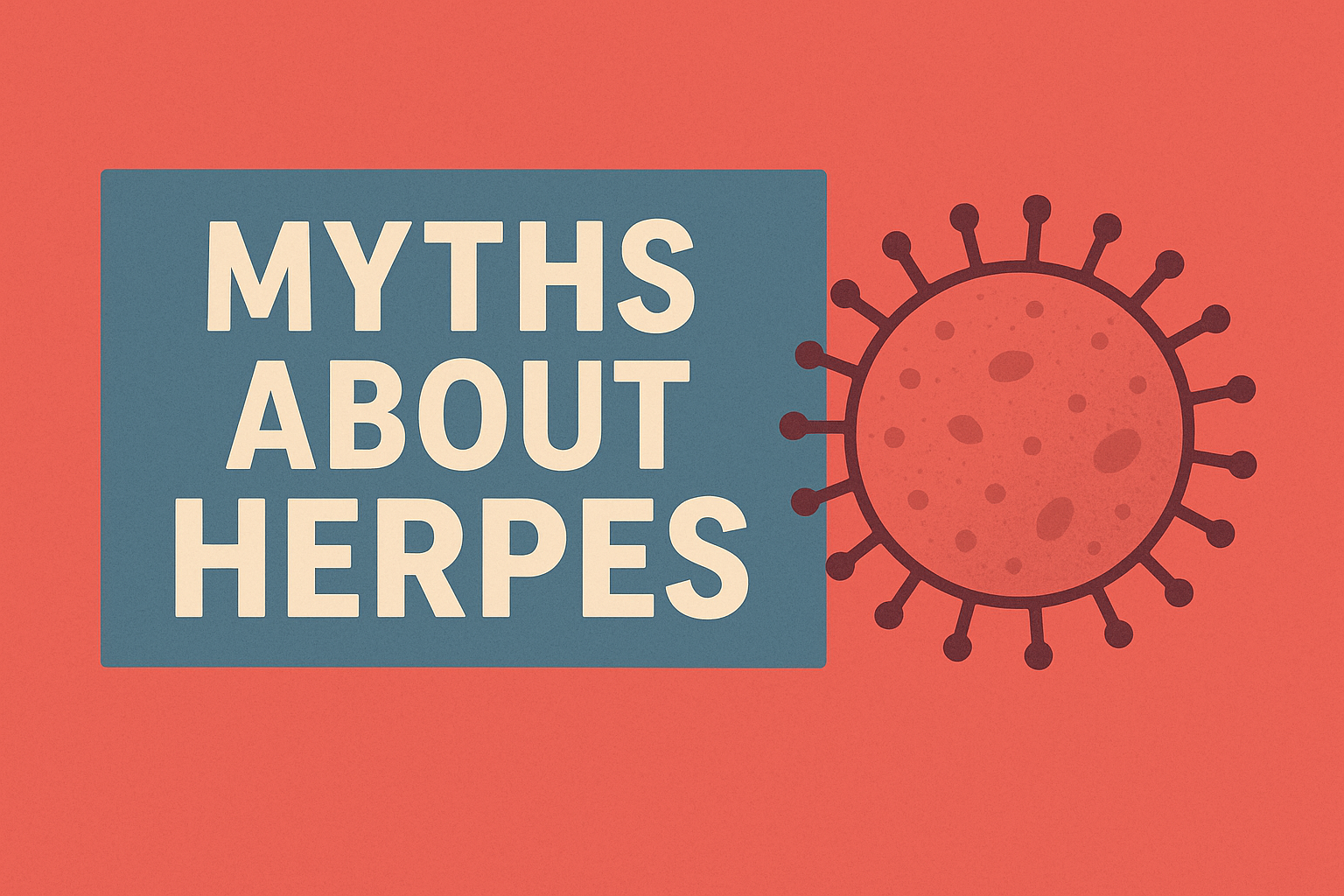When it comes to sexual health, there are some topics that never get enough attention. You may have heard of “blue balls” in men, but did you know that women can experience something similar?
Let’s talk about “blue vulva,” commonly referred to as blue vulva syndrome: what it is, how it compares to blue balls, and what you can do about it
Key Takeaways
Before diving in, here are the “Fast Facts”:
- Blue vulva is the female equivalent of “blue balls” – discomfort experienced after prolonged sexual arousal without orgasm
- It’s caused by increased blood flow to the genital area that doesn’t fully return to normal circulation
- Common symptoms include heaviness, aching, and sometimes a slight color change in the vulvar area
- Despite the name, it rarely causes the vulva to actually turn blue
- The condition is temporary, not dangerous, and can be relieved through various methods
Understanding Blue Vulva, or “Female Blue Balls”
Blue vulva is something many women experience but few discuss. It occurs when a woman becomes sexually aroused but doesn’t reach orgasm. During arousal, blood flows to the genital area, causing the tissues to swell. Without an orgasm, this blood can remain congested in the area, leading to feelings of heaviness, pressure, or mild pain. The term “blue vulva” parallels “blue balls” in men, though the actual blue color is usually minimal or non-existent in both conditions.
Blue vulva is a normal physiological response to arousal without release. It’s your body functioning as it should, even if the sensation isn’t pleasant. The discomfort is temporary and not harmful to your health.
Definition and Explanation
Blue vulva isn’t officially recognized as a medical condition, but that doesn’t invalidate the discomfort. Like blue balls, female blue balls are an uncomfortable sensation experienced when sexual arousal that doesn’t lead to climax.
The main symptoms of blue vulva include:
- Heaviness in the vulvar area
- A dull ache or discomfort
- Mild pain
- A slight bluish or darker tint to the vulvar tissues
These symptoms occur because of vasocongestion – increased blood flow to the genital area during arousal. When sexual arousal continues without orgasm, this blood congestion can cause uncomfortable sensations.
Some people also refer to this condition by other terms like “vulvar varicosity,” “pink pelvis,” “blue bean,” or “blue uterus.” It is unrelated to the common internet myth, “blue waffle disease“. Whatever you call it, it’s important to know that it’s not harmful and typically resolves within minutes after arousal subsides or after achieving orgasm.
Comparison with “Blue Balls”
Female blue balls and blue balls are very similar. Both conditions stem from the same physiological process – vasocongestion, or increased blood flow to the genitals during arousal.
In men, this blood fills the penis and testicles. In women, it fills the clitoris, labia, and surrounding tissues. When orgasm doesn’t happen, this blood doesn’t efficiently return to normal circulation, causing pressure and discomfort in both male and female bodies. Both cause discomfort due to trapped blood in genital tissues, but neither causes lasting damage and can be relieved through various, similar methods.
Recognizing both helps create a more inclusive understanding of sexual health. It acknowledges that people of all genders can experience discomfort from unresolved arousal, pushing back against the traditional focus on male sexual experiences.

What Causes Blue Vulva?
The main cause of blue vulva is simple: prolonged arousal without reaching orgasm. When arousal occurs, blood vessels in the genital area expand, allowing more blood flow. This increases sensitivity and prepares the body for sexual activity.
This process, called vasocongestion, is a normal part of the sexual response cycle, but if orgasm doesn’t occur, the blood remains trapped in these tissues for a while, leading to the discomfort.
Common factors include:
- Extended foreplay
- Sexual activity that stops before climax
- Difficulty achieving orgasm
- Certain medications that affect blood flow or sexual response
The trapped blood causes the uncomfortable sensations and the darker coloration that gives the condition its name (though an actual blue color is rare).
Blood Flow and Arousal
Sexual arousal in both men and women involves significant changes in blood flow to the genital region. In women, the clitoris and surrounding tissues become engorged with blood during arousal. This increased blood flow heightens sensitivity and prepares the body for sexual activity. When no orgasm occurs after arousal, the blood may remain congested.
Vascular congestion is natural and shows that your body is responding normally to sexual stimuli. The increased blood pressure in the genitals normalizes either through orgasm or as arousal gradually subsides.
Common Symptoms
If you’re experiencing blue vulva, you might notice several distinct symptoms. The most common symptom is a feeling of heaviness or fullness in the vulvar area. This sensation happens because blood has collected in the tissues but hasn’t been released through orgasm.
You might also feel an aching sensation or mild discomfort, or other genital pain. This is generally mild, akin to dull, persistent aching that can be distracting or annoying.
Some women report a slight change in color of their vulvar area when experiencing this condition. The tissues might appear slightly darker or have a bluish tint due to the congested blood, though this isn’t always noticeable.
The good news is that these symptoms are temporary and won’t cause any lasting damage. They typically resolve once:
- You achieve orgasm, which helps release the trapped blood;
- Your arousal naturally subsides over time
- You use other relief strategies (which we’ll discuss later)
Psychological Aspects of Blue Vulva Syndrome
The experience of blue vulva isn’t just physical – it can affect your emotions too. Many women report feeling frustrated, tense, or even irritable when experiencing unresolved arousal.
These feelings make sense – your body has prepared for a sexual climax that didn’t happen. This can leave you feeling physically uncomfortable and emotionally dissatisfied.
The severity and psychological impact can vary widely from person to person. Some might feel minor frustration, while others might experience more significant emotional responses.
A few psychological factors that might come into play include:
- Frustration
- Tension
- Embarrassment
- Anxiety
One helpful approach is to understand that these feelings, like physical symptoms, are temporary. Distracting yourself with other activities or thoughts can reduce both the physical and psychological discomfort.
Myths and Misconceptions
Myth 1: Female blue balls isn’t real or doesn’t exist.
While not officially recognized as a medical condition, the physical discomfort of unresolved arousal in women is very real and has a physiological basis.
Myth 2: The vulva turns bright blue.
Despite the name, most women experience only a slight darkening or faint bluish tint, if any color change at all.
Myth 3: Women don’t experience discomfort from unresolved arousal.
Many women experience discomfort when aroused without reaching orgasm
Myth 4: Blue vulva is dangerous or harmful.
While uncomfortable, the condition is temporary and doesn’t cause lasting damage.
Myth 5: Women don’t desire orgasms as much as men.
Sexual satisfaction is important regardless of gender, and the discomfort of unresolved arousal affects people of all genders.
These misconceptions often stem from inadequate sex education and cultural scripts that prioritize male pleasure. By discussing these topics openly, we can help dispel myths and promote better understanding of all bodies.
Influence of Cultural Expectations
Cultural expectations play a huge role in how we understand and talk about sexual discomfort. For a long time, the concept of “blue balls” has been well-known, while “blue vulva” has received much less attention.
This imbalance reflects broader cultural patterns that often prioritize male pleasure over female pleasure. Historically, female sexual discomfort has been considered less important or even ignored completely.
There’s also a troubling history of sexual coercion, men pressuring women into sexual acts because of unresolved male sexual arousal. The idea that someone “needs” sexual release to avoid pain has sometimes been used as a coercive tactic, which is never acceptable.
Good sex education can help address these imbalances by:
- Teaching about sexual response in all body types
- Emphasizing that no one is ever obligated to provide sexual relief to another person
- Explaining the normal physiological responses that occur during arousal
- Promoting communication and consent in sexual relationships
How to Get Relief
If you’re experiencing blue vulva, there are several effective ways to find relief. The most obvious (and often most effective) is achieving orgasm, either through partnered sex or masturbation. This helps release the trapped blood and return blood flow to normal.
However, that’s not always possible or desired. Here are some alternative approaches that can help:
- Apply a cold compress – A cold pack or even a bag of frozen vegetables wrapped in a towel applied to the genital area can help reduce blood flow and ease discomfort.
- Distraction – Shifting your focus to non-sexual thoughts or activities can help your body move out of the arousal state naturally.
- Take a cool shower or bath – The cool water can help stabilize blood flow and reduce the heavy feeling.
- Rest – Simply lying down horizontally or taking a nap can help ease symptoms.
- Light exercise – Activities like walking can help redistribute blood flow throughout your body.
Remember that the discomfort is temporary and will resolve on its own with time, even if you don’t take specific action.
Long-term Solutions
If you experience blue vulva regularly, these tips may help find a long-term solution:
Understand your body: Learning about your arousal patterns can help you anticipate and manage situations that might lead to blue vulva.
Communicate with partners: Open conversations about sexual satisfaction can help ensure that both partners’ needs are addressed during sexual activity.
Explore self-pleasure: Becoming comfortable with masturbation gives you control over your own sexual release when needed.
Reframe the experience: Rather than seeing blue vulva as purely negative, you can view it as evidence of your body’s healthy response to sexual stimuli.
Consider timing: If you notice you experience blue vulva frequently, you might consider the timing of sexual activities when you’re less likely to be interrupted.
Importance of Communication
Open communication is essential when it comes to sexual health and satisfaction. This is especially true when dealing with issues like blue vulva or blue balls, which can sometimes be uncomfortable to discuss.
Communicating about your desires, boundaries, and discomforts can:
- Ensure mutual satisfaction
- Prevent misunderstandings
- Build trust and intimacy
- Help avoid using discomfort as a coercive tactic
- Lead to better sexual experiences overall
If you’re experiencing recurring discomfort related to arousal, it may be helpful discussing with a medical professional. They can offer personalized guidance and rule out any other potential causes of genital discomfort.
When discussing sensitive topics with partners, try using “I” statements to express your experience without placing blame. For example, “I sometimes feel discomfort when I’m aroused but don’t reach orgasm” is more effective than “You never help me finish.”
FAQs
Can blue vulva cause long-term damage?
No, blue vulva doesn’t cause any long-term damage or health problems. The discomfort is temporary and resolves either when you achieve orgasm or as arousal naturally subsides.
How long does blue vulva last?
The symptoms of blue vulva typically last from a few minutes to about half an hour after arousal subsides.
Is blue vulva more common in certain age groups?
Blue vulva can affect women of any age who are sexually active.
Can blue vulva happen without having a partner?
Yes, blue vulva can occur during solo sexual activities or even from arousal without physical stimulation (like while watching or reading erotic content) if orgasm doesn’t occur.
Should I see a doctor if I experience blue vulva?
Generally, blue vulva doesn’t require medical attention as it’s a temporary condition that resolves on its own. However, if you experience severe or persistent pain in your genital area, you should consult a healthcare provider to rule out other conditions.
Can menopause affect experiences of blue vulva?
Hormonal changes during menopause can affect sexual response, including blood flow to the genital area. Some women may notice changes in how they experience arousal and potential discomfort from unresolved arousal.
Is blue vulva the same as pelvic congestion syndrome?
No. Blue vulva is temporary discomfort from unresolved sexual arousal, while pelvic congestion syndrome is a chronic condition involving permanently dilated veins in the pelvic region.
Can certain medications make blue vulva worse?
Some medications that affect blood flow or sexual response might potentially influence how you experience blue vulva. If you’re concerned about medication effects on your sexual health, consult your healthcare provider.
Sources
Sexual Response and Orgasm: A Users Guide. https://www.healthline.com/health/healthy-sex/sexual-response-cycle
Vasocongestion and Sexual Response. https://www.sciencedirect.com/topics/agricultural-and-biological-sciences/vasocongestion
What is the sexual response cycle and what are its phases? https://www.medicalnewstoday.com/articles/sexual-response-cycle
Common Genital Discomforts. (2021). https://www.mayoclinic.org/symptoms/vaginal-pain/basics/causes/sym-20050768
When to Seek Help for Sexual Discomfort. (2022). https://www.acog.org/womens-health/experts-and-stories/ask-acog/when-should-i-call-my-doctor-about-pain






